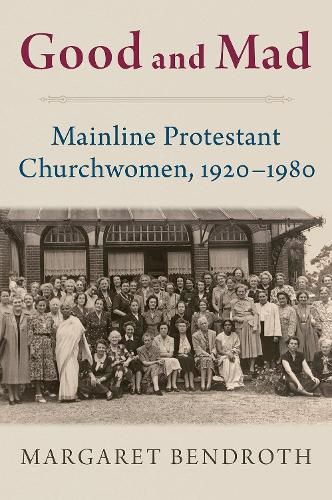Readings Newsletter
Become a Readings Member to make your shopping experience even easier.
Sign in or sign up for free!
You’re not far away from qualifying for FREE standard shipping within Australia
You’ve qualified for FREE standard shipping within Australia
The cart is loading…






Providing a new, women-centered view of mainline Protestantism in the 20th century, Good and Mad explores the paradoxes and conflicting loyalties of liberal Protestant churchwomen who campaigned for human rights and global peace, worked for interracial cooperation, and opened the path to women’s ordination, all while working within the confines of the church that denied them equality. Challenging the idea that change is only ever made by the loud, historian Margaret Bendroth interweaves vignettes of individual women who knew both the value of compromise and the cost of anger within a larger narrative that highlights the debts second-wave feminism owes to their efforts, even though these women would never have called themselves feminists.
This lively historical account explains not just how feminism finally took root in American mainline churches, but why the change was so long in coming. Through its complex examination of the intersections of faith, gender, and anger at injustice, Good and Mad will be invaluable to anyone interested in the history of gender and religion in America.
$9.00 standard shipping within Australia
FREE standard shipping within Australia for orders over $100.00
Express & International shipping calculated at checkout
Providing a new, women-centered view of mainline Protestantism in the 20th century, Good and Mad explores the paradoxes and conflicting loyalties of liberal Protestant churchwomen who campaigned for human rights and global peace, worked for interracial cooperation, and opened the path to women’s ordination, all while working within the confines of the church that denied them equality. Challenging the idea that change is only ever made by the loud, historian Margaret Bendroth interweaves vignettes of individual women who knew both the value of compromise and the cost of anger within a larger narrative that highlights the debts second-wave feminism owes to their efforts, even though these women would never have called themselves feminists.
This lively historical account explains not just how feminism finally took root in American mainline churches, but why the change was so long in coming. Through its complex examination of the intersections of faith, gender, and anger at injustice, Good and Mad will be invaluable to anyone interested in the history of gender and religion in America.